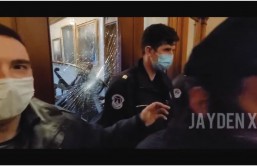Scientists from the Brigham Young University (BYU) found evidence of now inactive supervolcanoes which covered Utah’s Wah Wah Springs in 5,500 cubic km of magma during its one-week active eruption.
About 25 to 30 million years ago, when dinosaurs no longer roamed the Earth, the North American soil was teeming with camels, rhinos, tortoises and palm trees, whose ancient remains could be found in volcanic deposits.
The research team led by lead author Eric Christiansen and BYU Prof. Myron Best conducted their study using quantitative observations of the pyroclastic flow deposits’ width. Through the use of advanced technology in radiometric dating, X-ray fluorescence spectrometry, and chemical analysis of the stone deposits found at the site, they tried to determine if the volcanic ash could be dated at the same time the supervolcanoes erupted.
With the help of dozens of graduate students and hundreds of undergraduates, they were able to map out the areas of the eruption. Their findings were described comprehensively in two papers were published scientific journal Geosphere.
Researchers discovered that the Wah Wah Springs super-volcanic explosion extended its magma to cover a huge area in the heart of Utah, Nevada and in the north and south of Fillmore and Cedar City, respectively. Volcanic ashes were taken as far as Nebraska.
This super volcanic eruption is not an isolated volcanic case, according to the BYU geologists. They also discovered evidence of 15 similarly colossal volcanic explosions as well as 20 huge calderas, the resulting huge cavities found in plateaus.
These supervolcanoes are easy to be concealed in plain view because they are too huge compared to usual volcanoes which made them difficult to notice. Thus, no one noticed them for millions of years, until now.
To date, as few people may realize, there are still some supervolcanoes that are still active. In Wyoming, the Yellowstone National Park houses a comparatively sized caldera similar to the Wahwah Springs’. When it was first measured, it was around 25 miles across and three miles deep.








